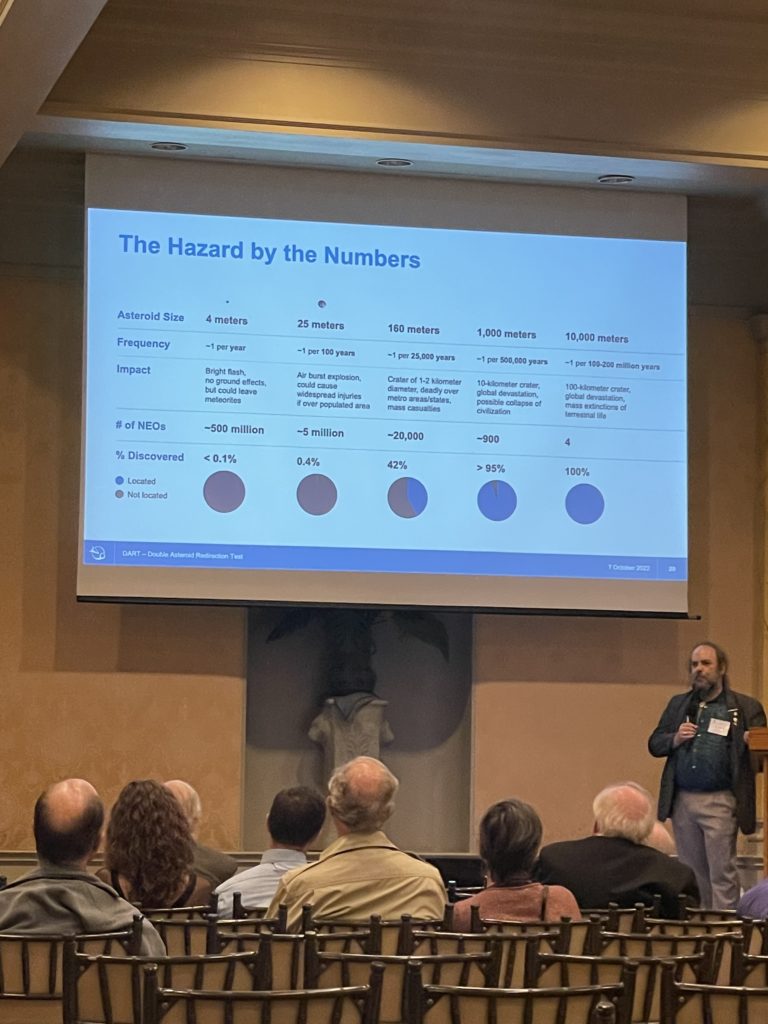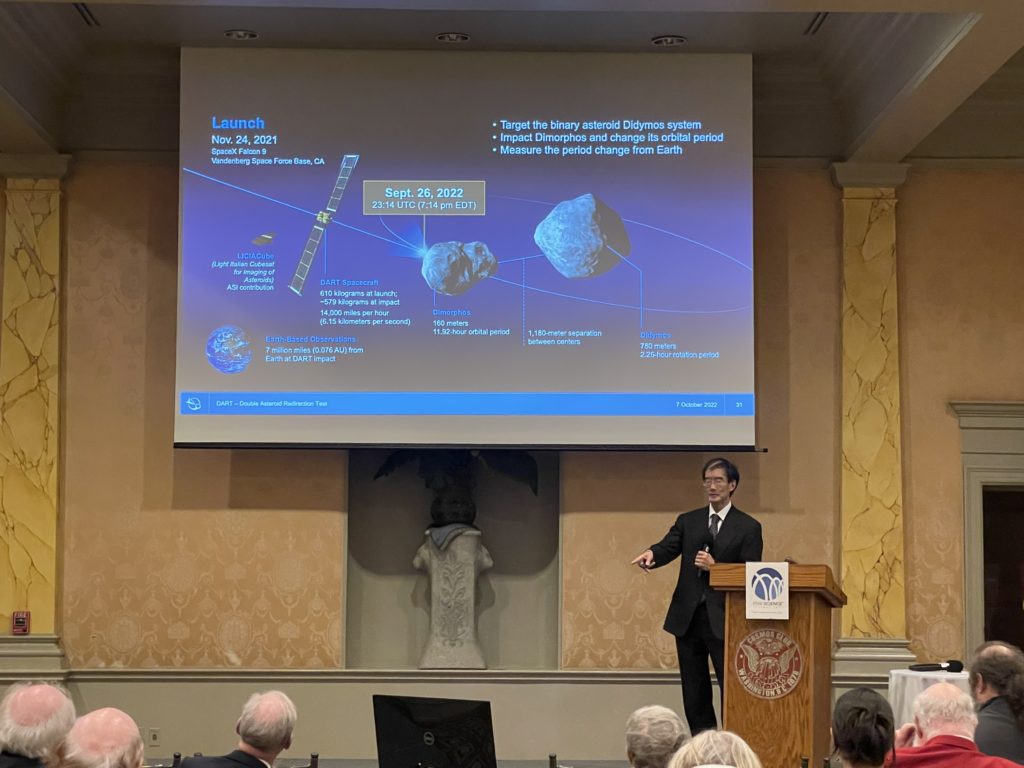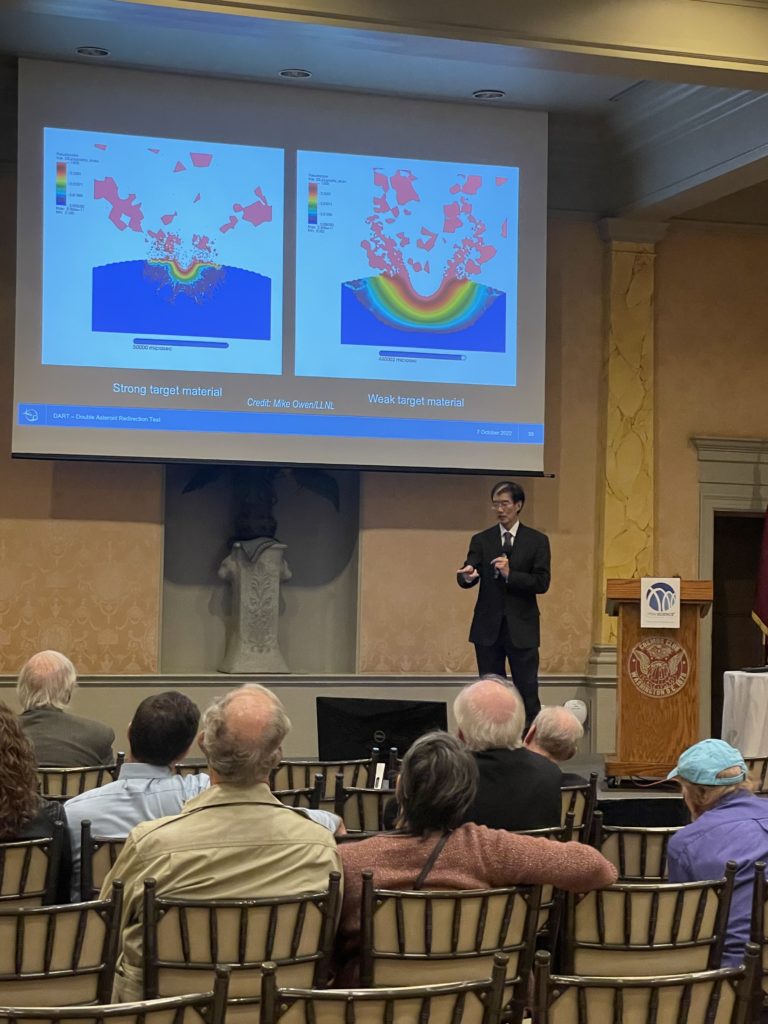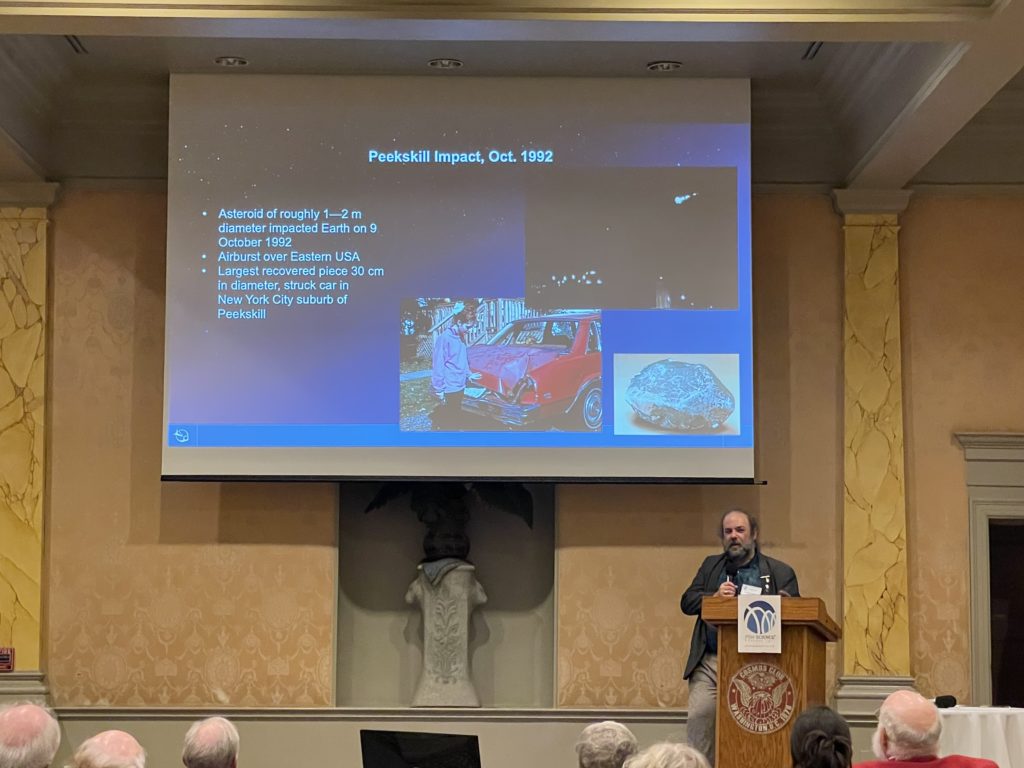DART: The Double Asteroid Redirection Test
Protecting Earth from Planetary Impacts
Andrew Cheng & Andrew Rivkin
Applied Physics Laboratory
Johns Hopkins University
Sponsored by PSW Science Member Joe Schulman
About the Lecture
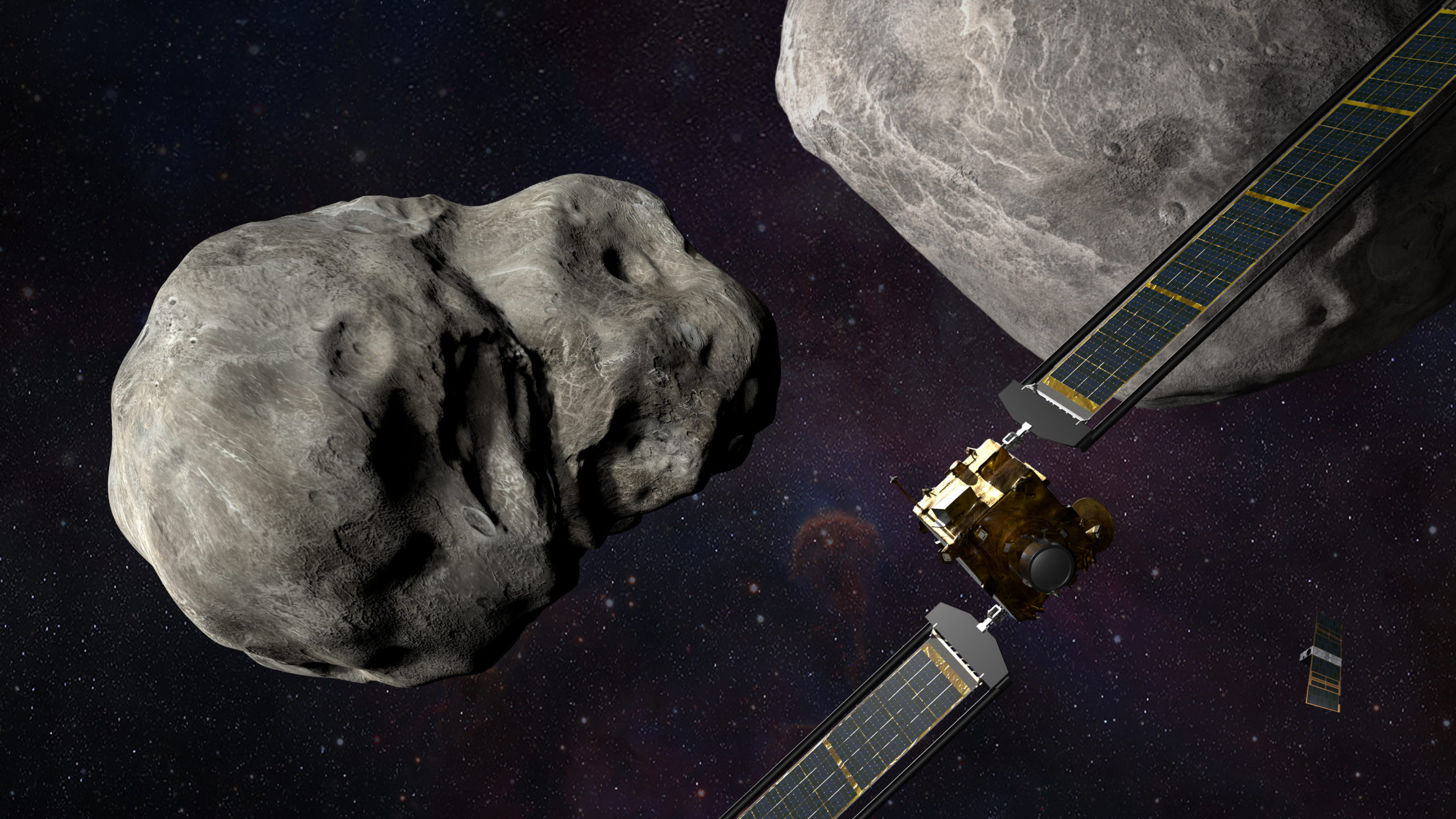
An on-orbit demonstration of asteroid deflection is a key test that NASA and other agencies wish to perform before any actual need presents itself to protect earth from impact with a large space object. The double asteroid redirection test mission (DART) mission is NASA’s demonstration of kinetic impactor technology that has the potential to deflect an object away from an earth-bound trajectory, before it impacts the planet. The aim of DART is to impact an asteroid to adjust its speed and path. DART will be the first space mission to demonstrate asteroid deflection by a kinetic impactor.
DART’s target is a binary asteroid system called Didymos, composed of a larger asteroid, also called Didymos (780 meters in diameter) and smaller “moonlet” asteroid, called Dimorphos (160 meters in diameter) that orbits the larger asteroid, with an orbital period of 11 hours and 55 minutes. The DART spacecraft will impact Dimorphos nearly head-on. The impact should shorten the orbital period several minutes.
The Didymos system is an eclipsing binary as viewed from Earth: Dimorphos passes in front of and behind Didymos as seen from Earth. Earth-based telescopes can observe variations in brightness of the system that allow its orbital period to be accurately determined. Observations of the orbital period before and after impact will allow mission scientists to determine the effect of the impact. Impact has been timed to occur when the distance between Earth and Didymos is at a minimum, about 11 million kilometers, to allow for the best observation of the impact from earth. A global observing campaign will measure the effect of DART’s impact.
About the Speaker
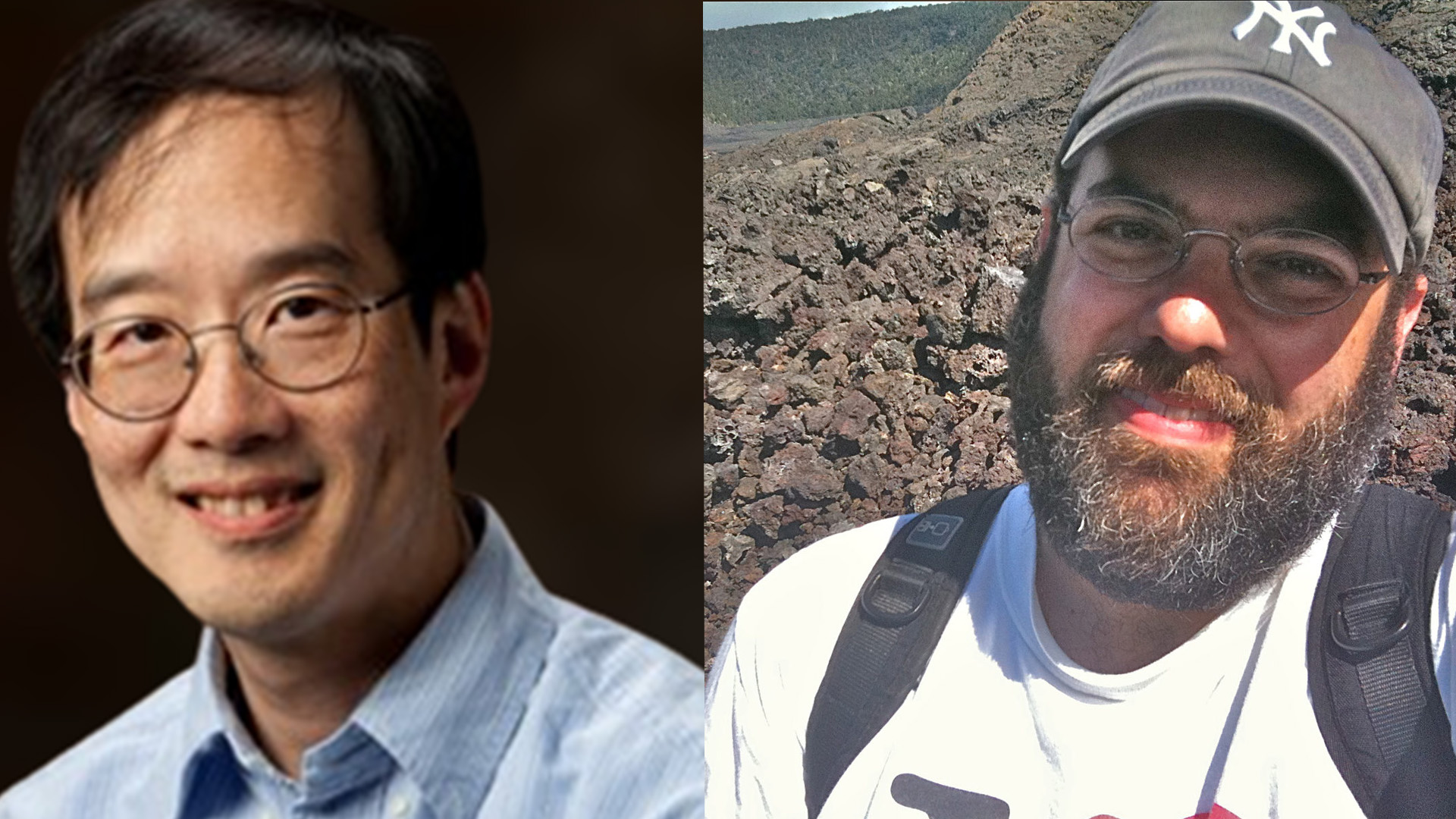
Andrew Cheng
Andy Cheng is Chief Scientist for Space Science at the Johns Hopkins Applied Physics Laboratory (APL), and he is co-lead investigator for the Double Asteroid Redirection Test (DART).
He previously served as Deputy Chief Scientist for Space Science in NASA’s Science Mission Directorate, he was the Project Scientist for the NEAR mission, and he served as Orbital LIDAR scientist on the Joint Science Team for the Japanese Hayabusa mission to asteroid Itokawa. He also was a scientist on the Galileo mission, a co-investigator on the Cassini mission, and the principal investigator for the Long Range Reconnaissance Imager (LORRI) on the New Horizons mission. He joined APL in 1983, and founded the Planetary Exploration Group there in 2004.
Andrew earned a BS in Physics at Princeton University and a PhD in Physics at Columbia University.
Andrew S. Rivkin
Andy Rivkin is a Planetary Astronomer at the Johns Hopkins University Applied Physics Laboratory and Investigation Lead for the Double Asteroid Redirection Test. His research centers on near-infrared spectroscopy and spectrophotometry of asteroids. In addition to observational work, he has been active in the broader Near-Earth Object community, serving as a team member on several efforts to understand and report Earth impact hazards and how to mitigate them. He also leads a group studying and reporting to NASA about the most important unknown factors related to human exploration of an asteroid.
Asteroid 13743 was named for him, in recognition of his work.
He earned a PhD in Planetary Sciences from the University of Arizona.
Minutes
On October 7, 2022, from the Powell Auditorium of the Cosmos Club in Washington, D.C. streaming online via Zoom and the PSW Science YouTube channel, President Larry Millstein called the 2,464th meeting of the Society to order at 8:04 p.m. EDT. He announced the order of business and welcomed new members. The Recording Secretary read the minutes of the previous meeting.
President Millstein then introduced the two speakers for the evening, Andrew Cheng and Andrew Rivkin, both from the Johns Hopkins Applied Physics Laboratory. Cheng is co-Lead Investigator for the Double Asteroid Redirection Test (DART) and Rivkin is the Investigation Lead. Their joint lecture was titled “DART: The Double Asteroid Redirection Test, Protecting Earth from Planetary Impacts.”
Rivkin began the presentation showing animations of what the DART team expected to happen if the test was successful. He then explained the purpose of the mission.
Between 100 and 300 tons of material impacts the Earth daily. While most material is millimeter-sized or smaller, but occasionally larger objects strike our planet’s surface. The speaker then used videos and photographs to describe notable recent and historic impacts, including the 1992 Peekskill Impact, the 2013 Chelyabinsk Impact, and the pre-historic Barringer Impact. Scientists believe objects approximately 1,000 meters across are big enough to collapse civilization and will strike every 500,000 years.
Because impacts have been recorded around the world, they present a uniquely global threat. In 2018, the United States developed the National Near-Earth Object Preparedness Strategy and Action Plan. One of the plan’s goals is to mitigate an identified asteroid threat. For asteroids approximately 100 meters across, the plan calls for kinetic impactors to divert the object’s path. Rivkin said that is where DART plays a role.
Rivkin said the lowest-cost way to observably test changing asteroid speeds by centimeters per second is to look at asteroid satellites. For that reason, the DART team identified the binary asteroid Didymos system and chose asteroid satellite Dimorophos as its target. Didymos is 780 meters across, and Dimorpohos is 160 meters across. Their centers are 1,180 meters apart.
Andrew Cheng then took to the podium to discuss DART’s mission and early results. DART launched November 24, 2021, carrying LICIACube—an Italian Space Agency cubesat for imaging the mission, and struck Dimorphos on September 26, 2022. DART’s impact is confirmed, and the team is now evaluating its success in achieving its remaining three mission requirements: causing a 73-second or greater change in the Dimorphos orbital period; measuring the mearing change to within 7.3 seconds form ground-based observations; and, measuring “beta” and characterizing the impact site and dynamics.
“Beta” is the momentum transfer to the asteroid. Cheng said the beta could be measured based on the amount of expelled ejecta from the surface. To properly correlate ejecta with momentum, the DART team needs to first understand the impact angle and the asteroid’s physical properties. Cheng then showed multiple simulated impact models assuming different asteroid material properties. The weaker the material, the greater the ejecta and larger the crater.
Cheng then described DART’s key technologies, including: an autonomous navigation system; DRACO imager; NEXT-C ion propulsion engine; roll-out solar arrays; coresat avionics; radial slot array; transformational solar array concentrators; and, LICIACube. As Cheng referenced these instruments for the remainder of his talk, he showed images and described their functions in greater detail.
DART first detected Dimorphos approximately 45 days before impact, and released LICIACube around 15 days out. SmartNav took over steering 8 hours from impact, and 4 hours out the spacecraft was fully autonomous. Cheng then used simulated images to illustrate in detail DART’s minute-by-minute progress toward impact. SmartNav ceased maneuvering the craft approximately 500 miles out, and DART finished its journey on a glidepath to impact.
Cheng then narrated in detail a movie compiled from DRACO images of DART’s final minutes up to the second before impact. He concluded by showing and describing LICIACube images of the impact plume. He said the European Space Agency’s Hera mission is set to visit the Didymos system in 2026, and will better see the impact crater.
Andrew Rivkin then returned to the podium. He showed images of Didymos’s discovery in 1996, and more recently from the Lowell Discovery Telescope. He explained how scientists measure the varying brightness of the system to determine when Dimorphos passes in front of Didymos. Going through 2023, dozens of telescopes will image the Didymos system to monitor the impact and ejecta. Rivkin showed several images and image-compilations of the immediate impact.
Already, scientists are discussing whether the surprisingly bright impact is a result of unused propellant aboard DART or vaporized rock from the impact. Scientists have also already observed longer-term ejecta evolution that make the Didymos system look like a small comet.
Rivkin said the DART team is now preparing to announce initial measurements regarding the impact’s effect on Dimorphosis’s orbital speed.
The speakers then answered questions from the in-person and online viewing audiences. One in-person member asked about the change in speed necessary to spare Earth from a potentially catastrophic asteroid impact. Rivkin said that because Earth moves one-Earth-diameter every 7 minutes, the beta necessary to “save” Earth depends on how far in advance an impact craft can strike the asteroid. Another in-person member asked about the greatest lesson of the DART mission. Cheng said the mission proves a kinetic impact is possible and, he hopes, beta measurements will prove kinetic impacts can be an effective means of planetary defense.
After the question and answer period, President Millstein thanked the speakers, made the usual housekeeping announcements, and invited guests to join the Society. President Millstein then adjourned the meeting.
Temperature in Washington, D.C.: 20.5° C
Weather: Cloudy
Attending in person: 42, concurrent live stream viewers: 67, for a total live viewership of 109, and the number of online viewers in the first two weeks of posting was, 344.
Respectfully submitted,
Janice Soreth, on behalf of Recording Secretary James Heelan
Highlights
